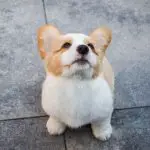How do i choose a dog collar
How Do I choose A Dog Collar?
The dog collar market is swamped with conventional as well as more unusual types of canine collars. These serve a variety of functions and needs. As a pet lover and pet owner, you should learn that different kinds of dogs need different types of dog collars.
But once your dog has stopped barking or if barking has never been a issue what do you need to consider in a dog collar? If you are taking your pet to a special event or to a special gathering and you want them to look really good try getting a fancy dog collar and leash. For small dogs a simple flat collar will suffice. For larger dogs you might try a prong collar a wide leather band.
What Are The Different Types?
Buckle collars are usually adjustable and do not tighten on your best friend’s neck once fastened. Using a rolled leather collar avoids the chafing or hair breaking that can occur using flat collars.
Quick Release collars are also adjustable and do not tighten once fastened.
The hottest thing for your well-mannered hound, head collars are not to be mixed up with muzzles. They still allow your dog to bark, pant, drink, chew and even bite.
Choke chains are metal chain links of various sizes with a ring on each. These collars should only be used while actively training or exercising your best friend. This type of collar is usually sold by length, so ask for assistance when getting a slip collar.
How Are the Different Types Of Dog Collar Used?
The initial training using a head collar should be done under the supervision of a qualified trainer, even though a head collar is considered to be more humane than a pinch or slip collar. If you have a very tight lead on a hound, the strap around the muzzle will push into its eyes and that is as bad as a Halti which pushes into the eyes anyway.
Any number of of the ideal trainers feel that the most useful training collar is to have no collar at all. The problem is that if you start out using a training collar your dog may know to only obey when wearing the collar. Collars are at the most useful training tools. At the worst they are training crutches.
To ensure that you are using the ideal collar as a training aid for your dog, you should seek the advice of a professional dog trainer.
You need to ensure that your best friend collar fits well. Badly fitted collars and their incorrect usage may be harmful to your dog and in the worst case it can prove to be fatal. A properly fitted collar has at least a two finger width space between the collar and the neck of the pet but it should not slip over his ears.
Hunting Dog Collars
Certain canine tracking systems also allow the canine handler or owner to determine what your dog is doing by using certain behavior systems that form part of the collar. You will be able to tell if a hound has stopped, is still moving, if a dog is barking, or if he has treed an animal.
When you can’t see your dogs due to cover, terrain or distance, radio telemetry dog tracking collars are very good at keeping track of any amount of dogs. These dog tracking collars enable the handler or owner to find the location of one dog at a time very quickly.
Some Final Thoughts
Anything other than a quick-release collar or a flat buckle should only be used during training sessions. You should aim to get away from using the training collar. If your pet only responds when wearing a training collar then he’s not really been trained.


